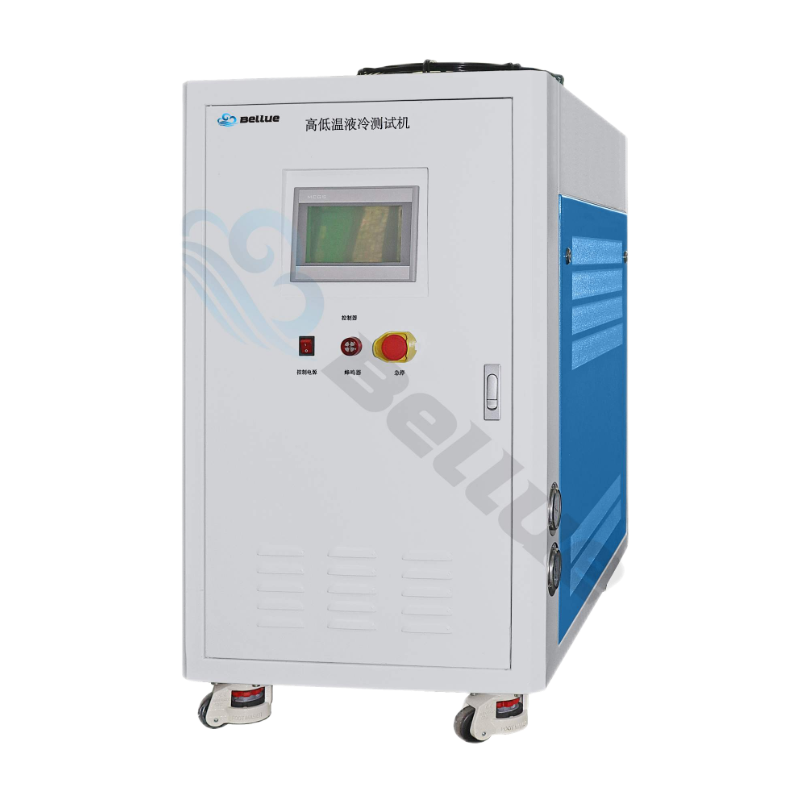Water-cooled and air-cooled high and low temperature coolant testing machines: What is the difference?
In industrial production and laboratory environments, high and low temperature coolant testing machines are key equipment to ensure the normal operation of equipment under various extreme temperature conditions. Among them, water-cooled and air-cooled are two common cooling methods. This article will delve into the differences between these two cooling methods to help you better understand their respective characteristics and application scenarios.
First, different working principles
Water cooled high and low temperature coolant testing machine, as the name suggests, is cooled by water circulation. It uses a pump to circulate the coolant to the part that needs to be cooled, takes the heat away through a heat exchanger, and then dissipates the heat into the air through a radiator. Because the specific heat capacity of water is larger, it can take away more heat, so the cooling efficiency is higher.
The air-cooled high and low temperature coolant testing machine is through the rotation of the fan, the heat generated by the equipment is directly distributed to the air through the radiator. This method is relatively simple in structure and does not require a complex waterway system, but under extreme high or low temperature conditions, the cooling effect may not be as significant as the water-cooled type.
Second, the heat dissipation effect is different
Due to the different working principles, there are also obvious differences between water-cooled and air-cooled heat dissipation effects. Generally speaking, under the same conditions, the heat dissipation effect of water-cooled type is better than that of air-cooled type. Especially in the high temperature environment, the water-cooled type can more effectively control the temperature of the equipment and ensure the stable operation of the equipment.
However, air-cooled models may perform better at low temperatures. Because in extremely cold conditions, the water system may fail due to icing, and the air-cooled type is not affected by this.

3. Maintenance and cost considerations
The water-cooled high and low temperature coolant testing machine is relatively complex in maintenance because it involves the waterway system. It is necessary to check regularly whether the waterway is smooth, whether the coolant is sufficient, and whether the radiator has dust and other problems. In addition, the initial investment cost of water-cooled type is usually higher than that of air-cooled type.
Relatively speaking, the maintenance cost of air-cooled type is low, and you only need to regularly clean the dust and debris on the radiator. And because there is no water system, it also avoids the risk of failure caused by coolant leakage or icing.
4. Selection of applicable scenarios
In the choice of water-cooled or air-cooled high and low temperature coolant testing machine, it is necessary to decide according to the specific use scenario. If your equipment often needs to operate in a high temperature environment and has high requirements for heat dissipation, then water cooling may be a better choice. If your equipment mainly works in low temperature environments, or there are more strict restrictions on maintenance costs and initial investment, then air cooling may be more suitable.
5. Parameters of water-cooled high and low temperature coolant testing machine
1, Model: HY20-2DS;
2, temperature range: -40~+85℃;
3, flow range: 1~30L;
4, pressure range: 0~300kpa;
5. Number of temperature zones: double temperature and double path.
Sum up
There are obvious differences between water-cooled and air-cooled high and low temperature coolant testing machines in working principle, heat dissipation effect, maintenance cost and application scenarios. When choosing, we need to make reasonable decisions according to our actual needs and conditions. No matter which method is chosen, it should be ensured that the equipment can operate stably under various extreme temperature conditions, providing a reliable guarantee for industrial production and laboratory research.
Energy storage liquid cooling temperature control technology application advantages
How to derive the test results of high and low temperature coolant tester
High and low temperature coolant test electrical source circuit connection method
The problem of water source during the use of high and low temperature coolant testing machine
Coolant filling and discharging method of battery module high and low temperature liquid cooling test machine
High and low temperature liquid cooling test machine solutions
